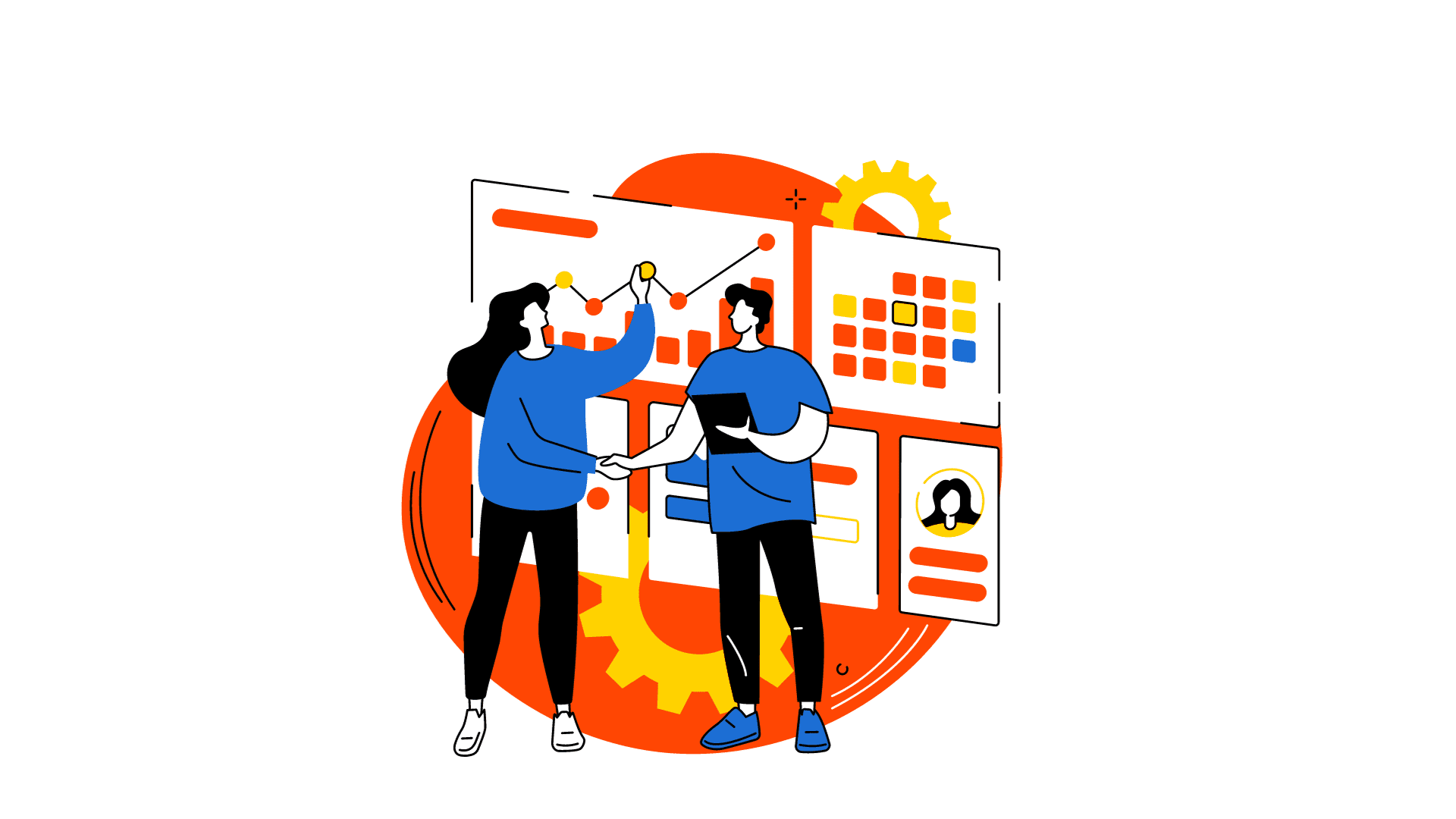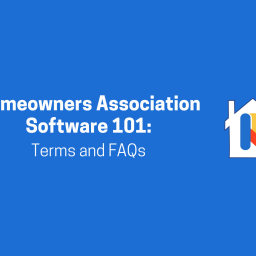Last Updated: January 1, 2024
Have you ever thought about how association-based organizations handle their members well, build ties, and get more people involved?
You’ve come to the right place!
Let’s talk about what’s the CRM.
Using a CRM system and method can be very helpful for organizations, especially associations.
An association CRM software is designed to meet the specific needs of organizations, trade associations, and other similar groups.
It helps groups keep track of information about their members, make contact easier, and get more people involved so they can do their job well.
💡 Why Dive into the Details?
We understand how important your time is.
This article will show you how to handle accounts in a unique way.
Find deals that work for you, and keep your life in order so you never lose track of what’s important.
Getting into CRM isn’t just software; it’s a way to make things different and live a life without boundaries.
So, why read this?
Because
Association CRM software is crucial for building strong ties between groups and their members. In this article, we will look at some of their most important features and benefits.
What is Association CRM?
The Association CRM system, which is also called Association Customer Relationship Management, is a special kind of CRM association management system made to meet the needs of membership-based groups, unions, charities, and other similar groups.
Software and strategy work together to help these groups better handle their exchanges and relationships with members, donors, workers, and other important people.
Here are the key features and functionalities of an Association CRM:
- Member Database Management: A good Association CRM system gives you a single, complete member database where you can store and organize member information, such as contact information, membership history, and activity history.
- Communication and Engagement Tools: CRM association management have communication and engagement tools that let you connect with your members through targeted emails, newsletters, event requests, and social media posts. This makes members more interested in your organization.
- Event and Program Management: These systems make event and program management easier by including features like event registration, payment handling, attendance tracking, and follow-up after the event. This makes sure that all of an organization’s activities run smoothly.
- Data Analytics and Reporting: CRM association management system come with data analytics and reporting tools that let you learn more about how members behave, what they like, and how involved they are. You can use customizable reports to help you make choices based on data and improve your tactics.
- Member Retention and Growth Support: CR) systems help associations keep members by making it easier to reach out to them personally, update their memberships, and keep track of how happy their members are. In addition, they look for ways to bring in new people, which helps the group grow.
🗝️ Did you know that 91% of associations with 10 or more workers use CRM systems?
Understanding Association CRM
Don’t you quite understand what CRM is?
No problem, we are here to help you understand better.
Association CRM software is a special kind of tool that helps organizations keep track of and grow their ties with members.
It is very important to keep members happy, get them more involved, and make sure that association-based organizations can stay in business.
Here’s a deeper understanding of Association CRM:
- Concept of Association CRM
Association CRM software is a complete strategy and software solution for handling and growing relationships with members, donors, workers, and other important people in membership-based groups and associations.
It involves collecting, sorting, and using data about members to improve their experiences, get them more involved, and help the group reach its goals.
- Purpose of Association CRM
Manage Member Data: It’s a single place to store and manage information about members, like their contact information, membership background, interaction records, and more.
Improve Communication: CRM association management lets you talk to members in a focused and personal way through email, newsletters, and social media, among other things. This makes it easier to stay in touch and share useful information.
Enhance Member Engagement: If associations know what their members like and how they act, they can make sure that their events, programs, and tools are just right for them, which will increase member engagement and happiness.
Streamline Operations: CRM systems handle routine tasks, which cuts down on the work that needs to be done by hand and boosts productivity. This lets employees focus on big-picture projects.
Support Growth: Customer relationship management (CRM) systems for groups help find ways to keep members and get new ones, which helps them reach their goals and get more members.
- Benefits of Association CRM:
Improved Member Experience: CRM makes it possible to personalize contacts and services, which improves the general experience and happiness of members.
Enhanced Member Retention: By keeping track of member benefits and involvement, associations can deal with problems before they happen and make sure that members are still interested in what they have to offer, which will keep them renewing their memberships.
Efficiency and Productivity: Automation and streamlining processes cut down on manual work, giving employees more time to work on important projects.
Data-Driven Decision-Making: The reports and analytics tools in CRM systems give you information about how members behave and what trends they are following, which helps you make smart decisions.
Targeted Communication: CRM systems let groups send messages that are specific and useful to their members, making sure they get information that fits their needs and hobbies.
Member Growth: If associations improve their methods for getting new members and keeping old ones, they can increase their membership base. This can help them make more money and have a bigger effect.
- Key Features of Association CRM
Association CRM systems usually have tools for managing member databases, communicating and involving members, planning and running events and programs, analyzing and reporting data, and helping members stay with the association and join new ones.
🗝️ Did you know that 66% of companies switch CRMs because the one they have now doesn’t have all the tools they need?
10 Benefits of Association CRM
Association CRM systems can be very helpful for membership-based groups, unions, charities, and other similar organizations.
Here are ten important benefits:
Benefit #1: Enhanced Member Engagement
CRM systems help organizations tailor their messages and services to each member’s preferences, which makes members more interested and satisfied.
Benefit #2: Improved Member Retention
By keeping track of member contacts and happiness levels, associations can find members who are likely to leave and meet their needs before they do, which lowers member turnover and raises member retention rates.
Benefit #3: Efficient Data Management
CRM systems store user data in a single database, which makes it easier to enter, store, and retrieve data. This makes it easier to manage user details and makes sure that the data is correct.
Benefit #4: Targeted Communication
CRM tools let groups divide their members into groups and send them specific messages and communications. This makes sure that members get the right information and updates.
Benefit #5: Streamlined Event Management
CRM for associations makes it easier to plan, register for, and run events. They handle things like registering for events, taking payments, and keeping track of who is there, which saves time and money on administrative costs.
Benefit #6: Decisions Based on Data
CRM tools let groups make smart choices based on member behavior and trends, instead of just going with their gut.
Benefit #7: Increased Operational Efficiency
Automating regular tasks and processes cuts down on manual work, freeing up staff to work on strategic projects, member involvement, and activities that add value.
Benefit #8: Enhanced Member Services
CRM systems help groups provide better member services by making sure that staff have access to up-to-date information about members. This information can be used to quickly answer questions and meet requests from members.
Benefit #9: Improved Fundraising and Donor Management
CRMs often have donor management tools that help nonprofits keep track of donations, better handle relationships with donors, and run more successful fundraising efforts.
Benefit #10: Facilitated Growth
If associations can improve their member retention tactics and find growth opportunities, they can get more members, which means they can make more money and have a bigger effect.
Features and Functionality of Association CRM
All of the features and functions make it easier for membership-based groups and associations to handle member data, improve communication, make sure data security and compliance, and learn more about how members behave and interact with the organization.
➡️ Member Data Management
Centralized Database: An Association CRM software gives you a central place to store and manage member data, like contact information, participation history, preferences, and records of interaction.
Member Profiles: It lets businesses make thorough profiles of each member, with fields that can be changed to include unique information about each person.
Tracking Membership Status: To make sure correct membership management, the CRM keeps track of membership status, renewals, and member groups.
Historical Data: It stores historical data, which lets groups see how they’ve interacted and engaged with each person in the past.
➡️ Collecting and Storing Data
Data Capture Forms: A lot of CRM systems come with tools for making online forms that users can use to give comments, update their information, or sign up for events.
Data enter/Export: Associations can enter data about current members and export data for different reasons. This keeps data consistent and makes sure it works with other systems.
➡️ Data Security
Role-Based Access Control: CRM for associations with role-based access control let companies limit who can see member data based on their jobs and rights.
Data Encryption: To keep private member information safe, they use data encryption methods.
Compliance: A lot of CRM systems have tools that help businesses follow data security laws like GDPR and CCPA.
➡️ Communication Tools
Communication with Members: Association CRMs give you tools to send focused and personalized emails, newsletters, and other messages to members.
Member Segmentation: They let groups divide their members into groups based on demographics, behavior, or other factors so they can send them more appropriate messages.
Member Portals: Some CRMs have member portals where users can view personalized material and make changes to their data.
➡️ Email Campaigns
Email Campaign Creation: Many CRM systems have tools for planning and creating email campaigns, which lets businesses send people relevant messages at the right time.
Analytics and Tracking: They offer analytics and tracking for emails so you can keep an eye on read rates, click-through rates, and member replies.
➡️ Reporting and Analytics
Customizable Reports: CRM systems let businesses make reports that are exactly what they need by letting them customize reports.
Data Visualization: Some CRMs make it easier to understand data by giving you tools like charts and graphs to show it.
Performance Data: They give you data on how engaged your members are, how many people show up to events, and other key performance markers.
🗝️ Did you know that 82% of associations use CRM tools to keep track of sales and automate tasks?
➡️ Tracking Member Behavior
Tracking Member Activity: CRM for associations keep track of how members act and connect with the organization, such as how often they visit the website, go to events, and respond to messages.
Engagement Scoring: A lot of them have engagement scoring systems that give members points based on how they connect with the community. This helps groups focus their marketing efforts.
Predictive Analytics: Some CRMs use predictive analytics to guess how members will act and find trends, which lets you plan ahead for how to involve them.
Selecting the Right Association CRM
Choosing the right Association CRM system is a big choice that can have a big effect on the success of your business.
Here are the most important steps and things to think about to help you make a smart choice:
Step 1: Define Your Needs and Objectives
To start, make sure everyone in your group knows exactly what its wants and goals are.
What are your main reasons for putting in place a CRM system?
Are you trying to get members more involved, make things run more smoothly, improve communication, or reach some other goal?
Make sure that your goals are in line with your organization’s overall purpose and long-term goals.
Step 2: Conduct a Needs Assessment
Key people in your association, like staff, board members, and volunteers, should be involved in a detailed needs assessment.
Find out what people think are the most important functions and features for the success of your group.
You should think about the problems and pain points that the CRM should help with.
Step 3: Research and Compare CRM Options
As soon as you know exactly what you need, look into the CRM choices that meet those goals.
Look for CRM systems that are made for nonprofits or associations.
These systems usually have features that are designed to help you handle your users and keep them interested.
Step 4: Request Demos and Trial Periods
Cut down your list of possible CRMs and ask the best ones to give you demos or trial periods.
During demos, pay close attention to how easy it is to use, how customizable it is, how it can generate reports, and whether it can connect to other tools you already have.
Step 5: Assess Costs and Implementation Plans
Look at the total cost of ownership for each CRM choice.
This includes both the initial registration fees and the ongoing costs like support, training, and any customizations that might be needed. Also, look at the execution plans that CRM companies offer.
Find out how long it will take to train your team, set up the CRM, and move the data over.
Comparison of Leading Association CRM Solutions
Future Trends in Association CRM
Trend 1: AI and Predictive Analytics
Machine learning and artificial intelligence (AI) are being used to look at member data, guess how members will act, and make interactions more personal. In turn, this helps associations adjust their outreach and get people more involved.
Trend 2: Self-Service Member Portals
More and more associations are putting in place self-service member portals where members can change their information, sign up for events, view material, and talk to other members.
This not only makes members happier, but it also cuts down on the costs of running the business.
Trend 3: Enhanced Security and Data Privacy
As worries about data security and privacy grow, CRM systems for associations are likely to add even more security features and make sure they follow rules like GDPR. It will still be very important to keep user info safe.
And, That!s It!
Well, well, well..
You made it to the end, good job!👏🏻👏🏻
Let’s review what we see;
In short, association CRM systems have emerged as indispensable tools for membership-based organizations, offering a comprehensive solution to manage member data, enhance communication, improve engagement, streamline operations, and drive growth.
These systems are tailored to meet the specific needs of associations, nonprofits, and similar groups, enabling them to build stronger relationships with members, donors, and stakeholders.
Choosing the right CRM system requires a thoughtful assessment of unique needs and objectives, followed by careful evaluation and selection from among the leading CRM solutions available in the market.
FAQs about Association CRM
1-What is Association CRM, and why do associations need it?
Association CRM software helps membership-based organizations manage member data, increase communication, engagement, and growth. It helps associations simplify operations, customize member interactions, and fulfill goals.
2-What key features should we look for in an Association CRM?
Member database administration, communication tools, event and program management, data analytics, retention support, and growth-focused features are crucial. Your association’s needs and goals should guide your CRM choice.
3-How can an Association CRM improve member engagement and retention?
CRM systems let associations personalize member interactions, provide targeted communications, and customize offerings. This boosts member engagement and retention by improving member satisfaction.
4-What are the security and compliance considerations when using Association CRM?
Association CRMs should include data encryption, role-based access control, and GDPR and CCPA compliance. Member data must be protected to ensure trust and compliance.
5-Are there cost-effective Association CRM options for smaller associations?
Smaller associations can find affordable CRM systems. Some suppliers provide scaled-down CRM software or pricing based on organization size and demands. You must investigate these possibilities to discover the best budget match.






